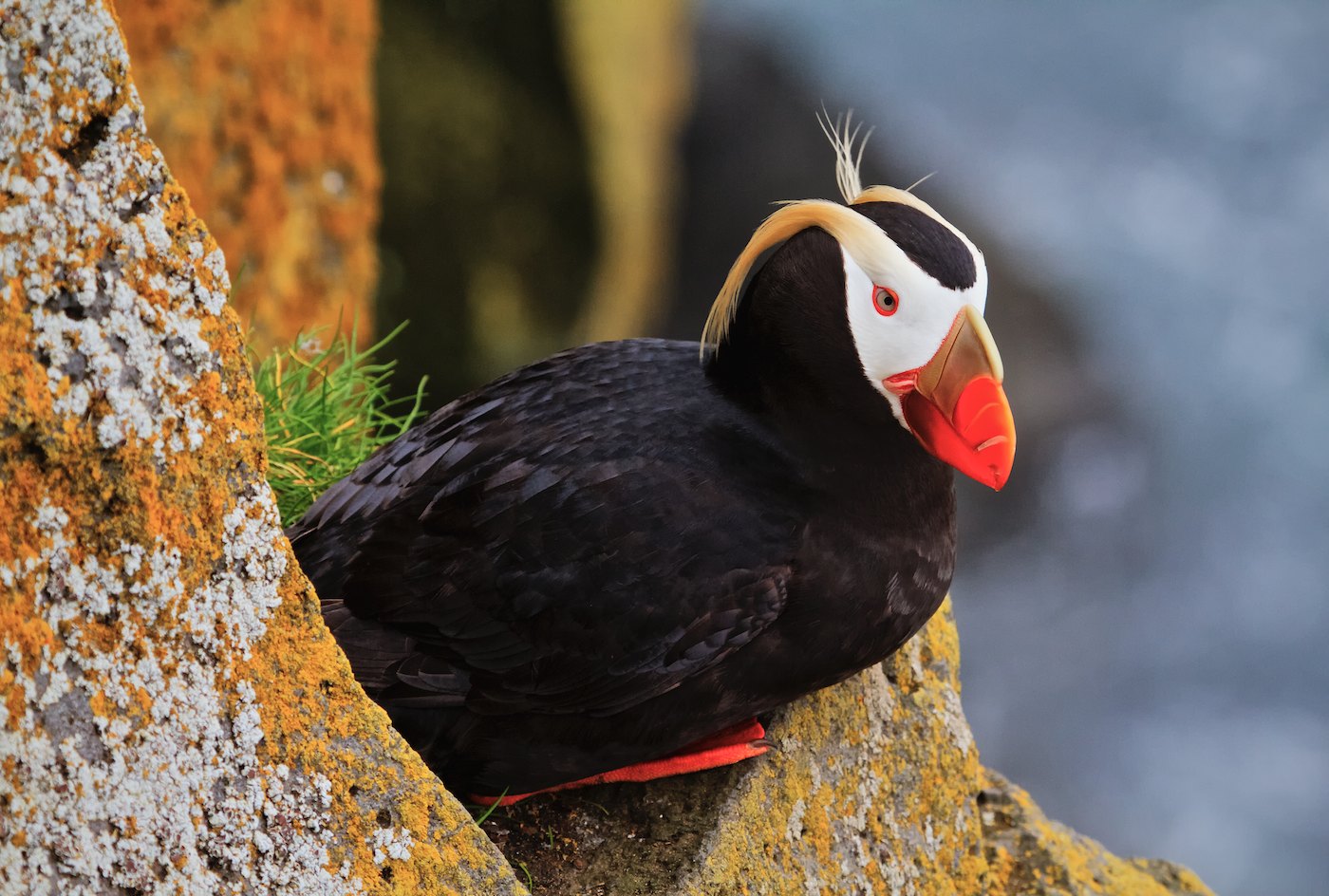
Here’s the second blog post in our puffin series, all about the bold and flashy Tufted Puffin:
Tufted Puffin: The West Coast’s Feathered Firecracker
If the Atlantic Puffin is the class clown, then the Tufted Puffin is the rock star. With bold yellow plumes streaming from its head and a jet-black body, this puffin is impossible to miss—and equally fascinating to learn about.
Let’s head to the Pacific and meet the flamboyant Tufted Puffin (Fratercula cirrhata).
Where They Live
The Tufted Puffin calls the North Pacific Ocean home. Its breeding range stretches from:
- The coast of California up through Alaska
- Across the Bering Sea to Russia, Japan, and the Kuril Islands
These puffins prefer nesting on remote islands with grassy slopes or cliffs. In the U.S., they’re most easily spotted along the coasts of Alaska and the Pacific Northwest.
How to Spot a Tufted Puffin
Tufted Puffins are instantly recognizable during the breeding season thanks to their:
- Creamy yellow feather tufts that sweep back from above each eye
- Bright white face contrasting with a glossy black body
- Large orange bill that rivals the Atlantic Puffin’s in brightness
- Orange feet and a stocky build
In winter, they shed the face tufts and become harder to distinguish, with darker faces and duller bills.
Diet and Diving Skills
Like their puffin cousins, Tufted Puffins are skilled underwater hunters. Their menu includes:
- Small fish such as anchovies and sand lance
- Squid and other marine invertebrates
They dive up to 200 feet deep, using their wings to “fly” underwater and their webbed feet to steer.
Breeding Behavior
Tufted Puffins are burrow nesters—yes, even on steep islands!
- They dig burrows in soft soil or nest in crevices among rocks.
- Only one egg is laid per season.
- Both parents share incubation and feeding duties.
After about six weeks, the chick (puffling!) is ready to fledge and will head out to sea alone.
Conservation Notes
Tufted Puffins are currently listed as Least Concern globally, but regional declines are raising concern, particularly in parts of:
- Washington and Oregon, where colonies have dramatically shrunk
- California, where they are now very rare
Threats include warming seas, reduced prey availability, human disturbance, and invasive species like rats that prey on eggs and chicks.
Fun Puffin Fact
Tufted Puffins spend more than eight months of the year at sea. During this time, they rest on the water, never touching land until breeding season returns.
Next up: the Horned Puffin—nature’s punk-rock seabird with its signature “horns”! Stay tuned.
Sources:
- [1]: Audubon Field Guide – Tufted Puffin
- [2]: National Park Service – Tufted Puffins in Alaska
- [3]: BirdLife International – Fratercula cirrhata
More photos below ↓











Disclaimer: This blog post is for edutainment purposes only and may not be entirely accurate.






